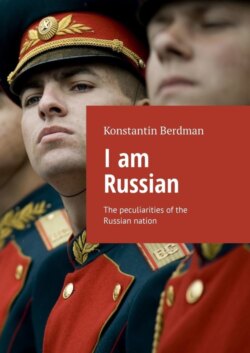Читать книгу I am Russian. The peculiarities of the Russian nation - - Страница 4
Chapter 1: Historical Roots
Оглавление1.1. Ancient Russia
The history of the Russian nation begins with Ancient Russia, which was formed in the IX – X centuries. This time is characterized by the formation of the first state formations, such as Kievan Rus. The Christianization adopted in 988 and cultural exchanges with Byzantium became fundamental for the formation of Russian identity.
Christianity, which became the state religion, had a profound impact on social and cultural life. It contributed to the development of writing, architecture and art, as well as the integration of Russia into the European cultural context. The Byzantine heritage is reflected in architecture (for example, the Church of St. Sophia in Kiev), iconography and literature.
Kievan Rus was a union of tribes based on family ties and common interests. This time was also marked by the development of trade, which contributed to economic growth and cultural exchange with neighboring peoples.
1.2. The Mongol Invasion
The Mongol invasion in the XIII century had a significant impact on the development of Russia. It led to the destruction of many cities, such as Kiev, and dealt a serious blow to the economy and culture. However, despite the destruction, this period also contributed to the formation of new political and cultural realities.
The period of the Mongol-Tatar yoke lasted for more than two and a half centuries and left a deep mark on the consciousness of the Russian people. This time was characterized by a sharp change in the structure of power, when local princes began to depend on the Horde. However, this dependence also led to the formation of a sense of unity among the Russian lands, which was subsequently reflected in the struggle for independence. Difficult living conditions contributed to the development of new forms of self-government and the strengthening of local principalities.
The Mongol invasion became a catalyst for the formation of new social and cultural realities. The Russian lands began to unite, realizing the need for a joint struggle against an external enemy. This realization became the basis for further unification of the Russian lands.
1.3. The Moscow Principality and the Unification of Russia
In the XIV – XV centuries, the Moscow Principality became the center of unification of Russian lands. This time is characterized by the strengthening of the centralization of power, as well as the development of culture and education. The Moscow princes, gradually accumulating forces and resources, began the process of uniting the disparate Russian principalities.
The key event of this period was the liberation from the Mongol-Tatar yoke at the end of the XV century. In 1480, after standing on the Ugra, Prince Ivan III of Moscow was able to defend the independence of Russia and assert his authority. This moment became a symbol of liberation and the beginning of a new era in the history of Russia.
